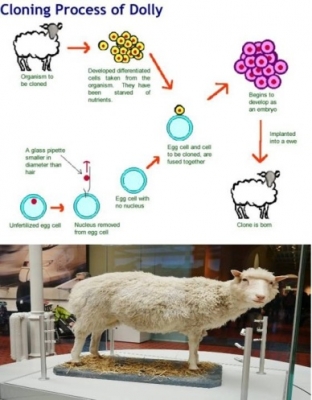
Cloning is the process of generating a genetically identical copy of a cell or organism. The closest that we can see this occurring naturally, is in identical twins.
Scientists use two methods to get an exact, genetic copy of an organism. In the first, known as Artificial Embryo Twinning, scientists mimic the natural process of creating identical twins. The only difference being that in the natural process twinning takes place inside the womb and in the artificial twinning method, the splitting of the fertilized egg into two genetically identical embryos takes place in the lab.
The second method is called ‘Somatic Cell Nuclear Transfer’ or SCNT. In this process a viable embryo is created using a body cell and an egg cell.
Scientists at the Roslin Institute in Edinburgh, UK made history on 5th July 1996, when they successfully cloned a sheep named Dolly using the SCNT method.
In this process of cloning, the scientists extract the DNA from an animal cell and implant it into an egg cell taken from another animal. Before implanting it, the DNA of the recipient cell is removed.
The idea of cloning can be exciting and frightening at the same time. Once the techniques are perfected, cloning may be used in preserving endangered species and for reviving extinct species as well.
Picture Credit : Google




